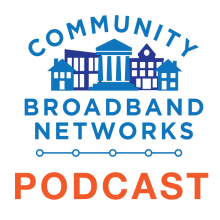Open Access Engineering Options - Community Broadband Bits Podcast 172

The holy grail of Internet access for many of us continues to be a situation in which multiple providers can compete on a level playing field, which should lower costs to subscribers and encourage innovation. Often called open access, this may involve a municipality building a fiber optic network and making it available on a wholesale level - a model that has been tried to various degrees of success.
This week, we talk with Tim Pozar, a long time Internet entrepreneur and community network enthusiast, about why he supports that model and his ideal method of engineering such a network. We talk about different possibilities for how to design the network and trade-offs involved with those choices. Tim has worked for many years to encourage this model in San Francisco, which already has some of the locally rooted ISPs that we would hope would ultimately thrive if the City had that type of network available.
This show is 30 minutes long and can be played on this page or via Apple Podcasts or the tool of your choice using this feed.
Transcript below.
We want your feedback and suggestions for the show-please e-mail us or leave a comment below.
Listen to other episodes here or view all episodes in our index. See other podcasts from the Institute for Local Self-Reliance here.
Thanks to bkfm-b-side for the music, licensed using Creative Commons. The song is "Raise Your Hands."




